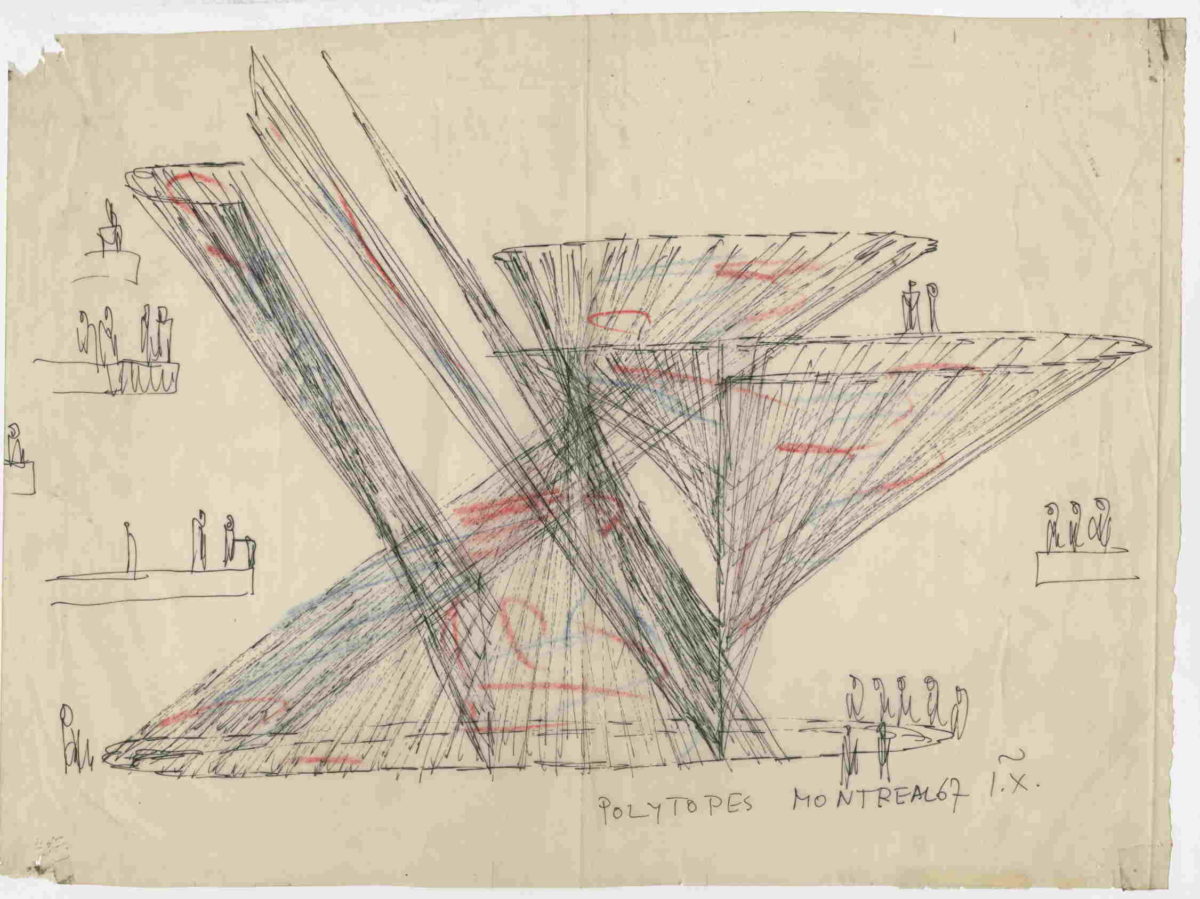The matrix of works that combine sound and light stems from Xenakis’s deep longing for abstract art. It happened for the first time in Montreal, in 1967, when Robert Bordaz – curator of the French Pavilion at the World’s Fair – asked Xenakis to compose the music for a slide show on the theme of Crystals. Instead of a sequence of images and sounds, the composer proposes an “electronic sculpture that combines light, music and structure” with the following properties: around the central void created by the seven floors of the pavilion designed by Jean Faugeron, he forms five hyperbolic paraboloids made of steel cables on which 1200 electronic flashes are distributed and vary every 25th of a second (threshold of perception by the human eye). Once an hour, during eight minutes, the spectator perceives these movements of light in the center of the pavilion. He can, moreover, walk on the floors, go up and down and thus modify his point of view on the installation. After these eight minutes, everything returns to its natural state. The rhythm of the illumination of flashes is based on mathematical group structures. Xenakis also thought about the automation of the light show, with a control strip, which however requires human intervention. The music broadcast (Le Polytope) is for four identical ensembles, recorded on tape and spatialized in the French pavilion.
Categories
Polytope of Montreal

